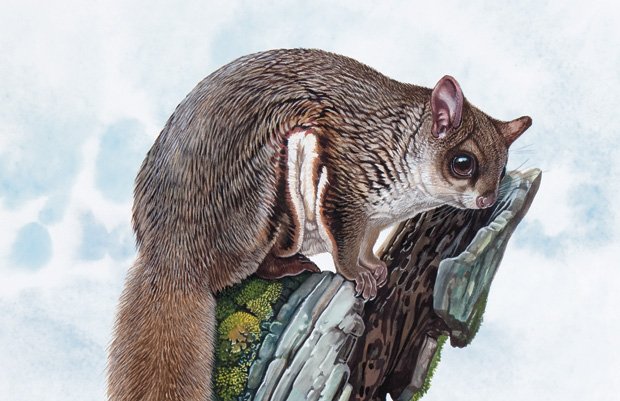Gallery: Gliding mammals in the world

Black flying squirrel (Aeromys tephromelas)
Several locations, South-east Asia
Individuals can have tails over half a metre long.
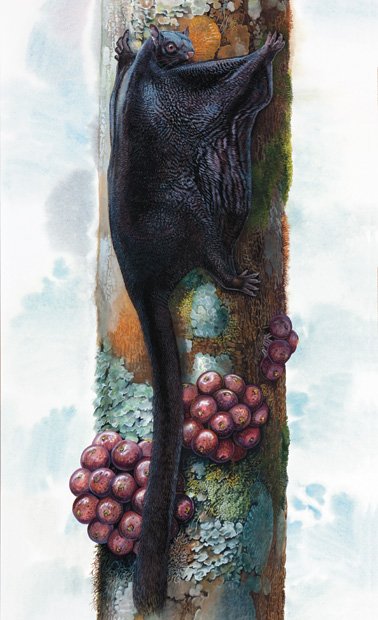
Pakistan woolly flying squirrel (Eupetaurus cinereus)
Northern Pakistan
Until the mid-nineties, the Pakistan woolly flying squirrel was thought to be extinct, but the species was rediscovered in 1994 in the western Himalayas in northern Pakistan. Salajit, a mixture of its urine and faeces, is prized as a traditional medicine.
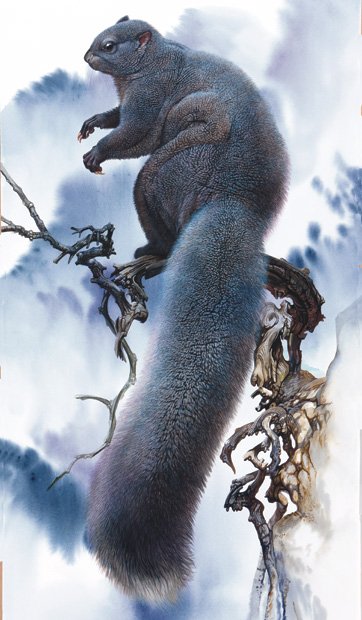
Pel’s scaly-tailed flying squirrel (Anomalurus pelii)
Liberia, Ivory Coast and Ghana
The squirrels make dens in tree hollows, occupied by up to six animals. Individuals call to one another in deep hoots and hiss and snap their teeth when disturbed in their dens.
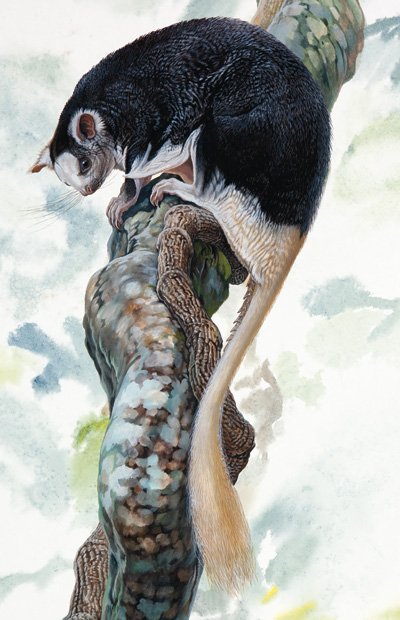
Complex-toothed Flying Squirrel (Trogopterus xanthipes)
China and Tibet
The complex-toothed flying squirrel lives off a diet including mountain peaches and acorns. They are captured for the collection of their faeces, a traditional Chinese medicine, contributing to a drop in numbers in the wild.
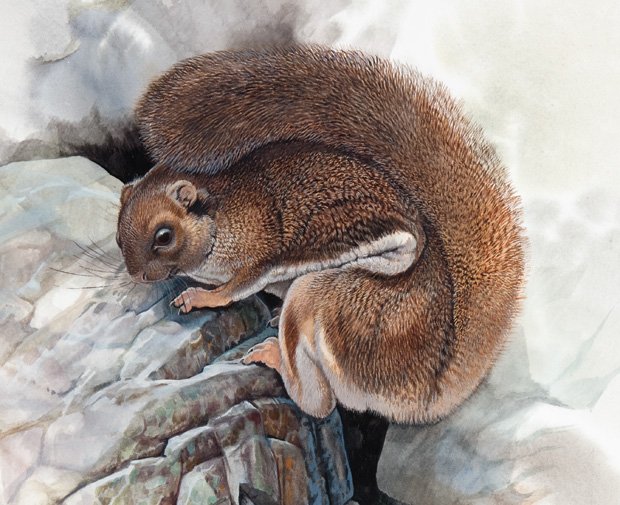
Travancore flying squirrel (Petinomys fuscocapillus)
Southern India and Sri Lanka
The travancore flying squirrel was thought to be extinct till 1989 when individuals were found in Kerala, India. Its penchant for tender coconuts can result in serious damage to plantations where farmers offer bounties on their heads.

Greater glider (Petauroides volans)
South-east Queensland to central Victoria, east coast of Australia
Unlike other Australian gliders, the greater glider’s gliding membrane extends only from its elbow, rather than its wrist, to its ankle. It feeds almost exclusively on gum leaves.
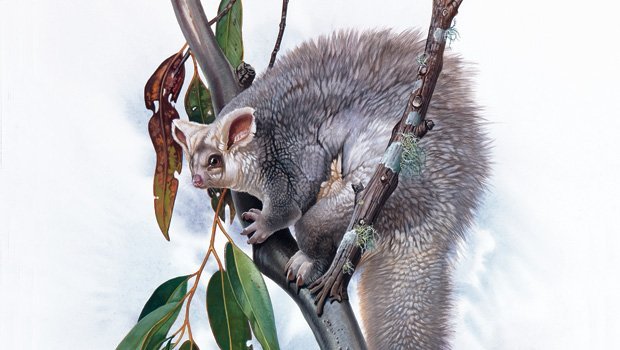
Indian giant flying squirrel (Petaurista philippensis)
Several locations including India, Sri Lanka and South-east Asia
Indian giant flying squirrels are particularly partial to mangoes and the fruits of the Tamarind tree. Animals sleep on their backs with their legs and gliding membranes spread out to keep cool in hot weather.
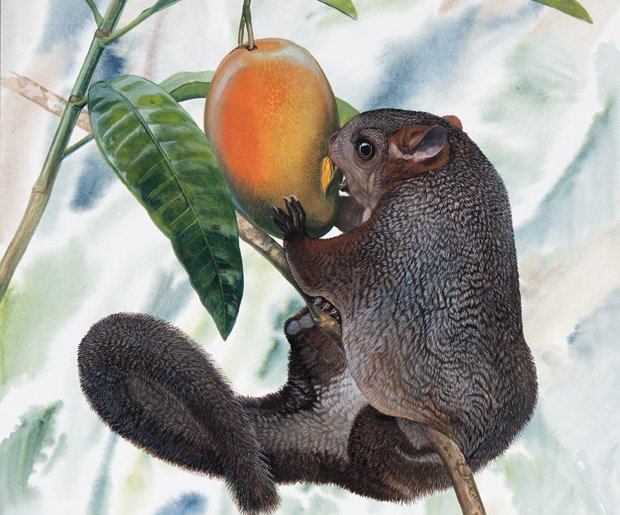
Mentawai flying squirrel (Iomys sipora)
Mentawai Islands, Indonesia
The endangered Mentawai flying squirrel is only found on two islands in the Mentawai chain. Little is known about squirrel that was previously thought to be a subspecies of the Javanese flying squirrel.
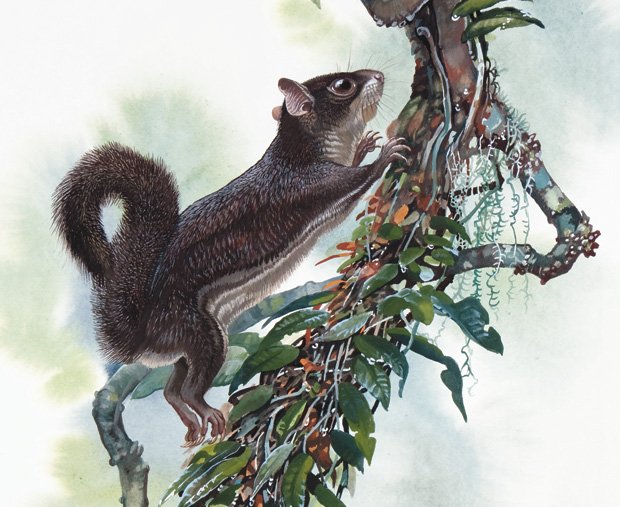
Grey-headed giant flying squirrel (Petaurista caniceps)
Nepal, China and Burma
The grey-headed flying squirrel lives in mountainous regions up to 3600m above sea level. It exists on a diet of fir cones, buds and rhododendron leaves.
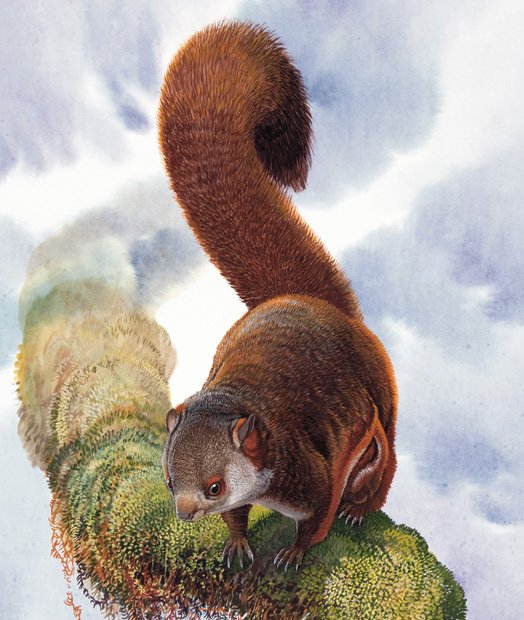
Red and white giant flying squirrel (Petaurista alborufus)
Tibet, China, Burma and Thailand
These big squirrels nest in tree hollows and limestone caves, typically 2000-3000m above sea level, and can weigh up to 2kg.
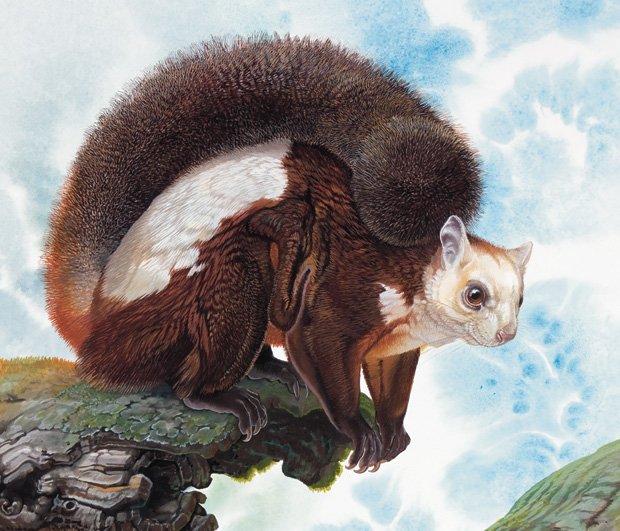
Lord Derby’s scaly-tailed flying squirrel (Anomslurus derbianus)
Central, West and East Africa
Animals of the species live mainly off tree bark. They make a range of noises, from defensive hisses and growls to twitters and purrs.
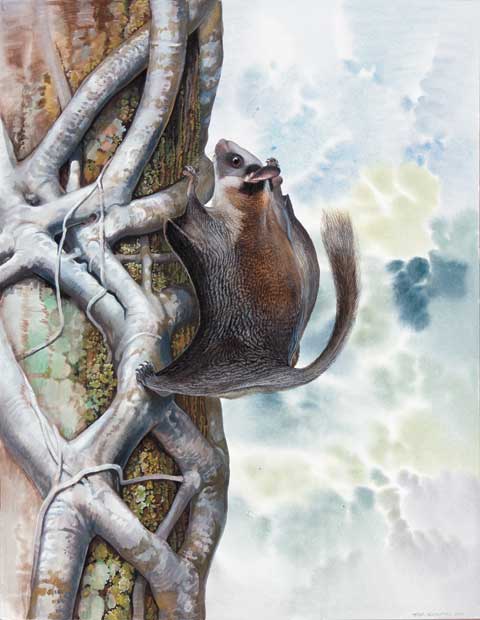
Feathertail glider (Acrobates pygmaeus)
Eastern Australia
Roughly the size of a mouse, this is the smallest species of gliding mammals.
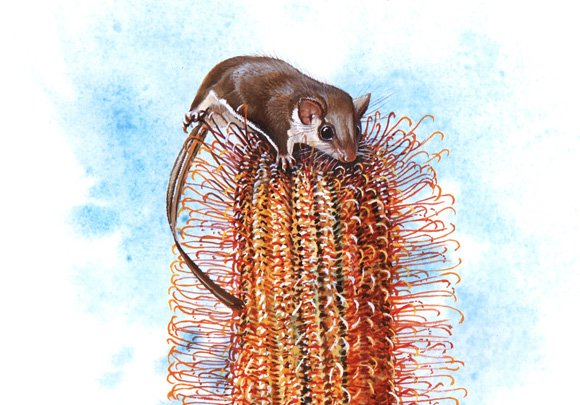
Northern glider (Petaurus abidi)
New Guinea
This tropical glider enjoys its fruit, known to feed on figs in the wild and enjoying guavas, bananas and lilly pilly berries in captivity.
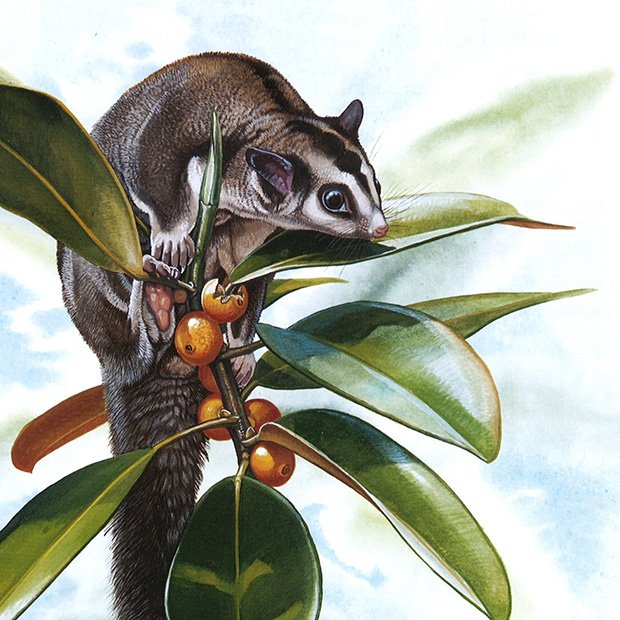
Yellow-bellied glider (Petaurus australis)
Eastern Australia
Inhabits forests dominated by mature tall eucalypts in temperate and subtropical eastern Australia. It eats invertebrates and extracts sap from trees by cutting a v-shaped notch in the trunk.
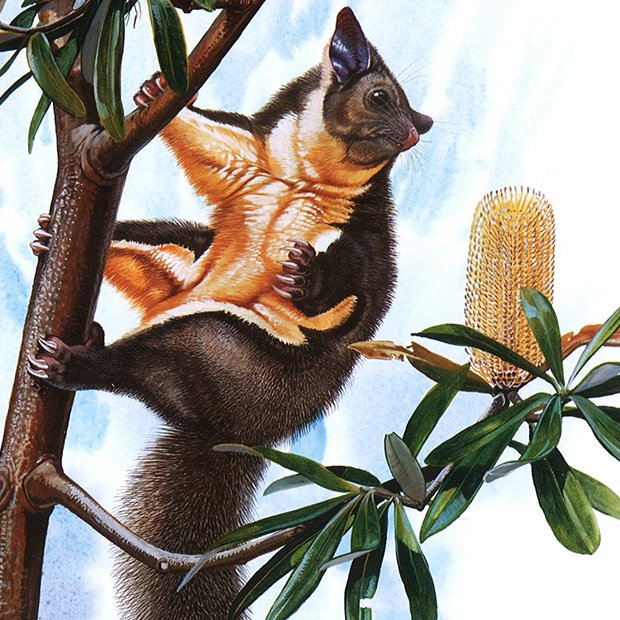
Biak glider (Petaurus biacensis)
Papua
Common in gardens and village areas on certain islands in the Schouten Group, north-west of Papua.
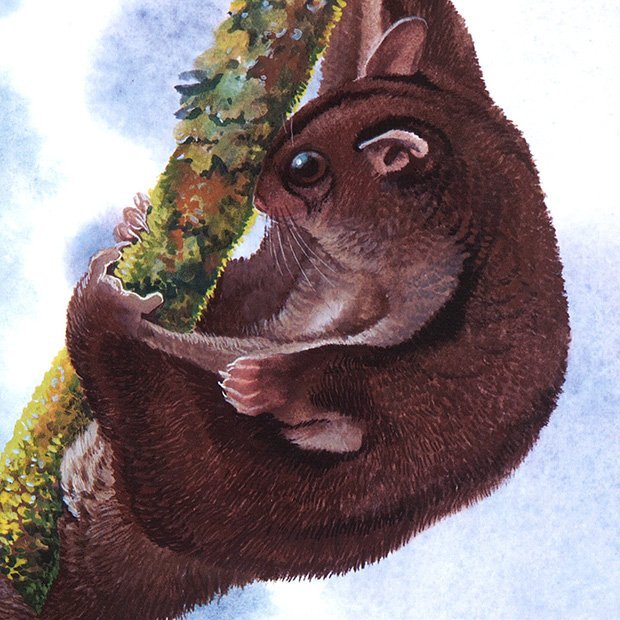
Sugar glider (Petaurus breviceps)
New Guinea and 27 surrounding islands, across northern and eastern Australia
Has the widest distribution of any of the marsupial gliders.
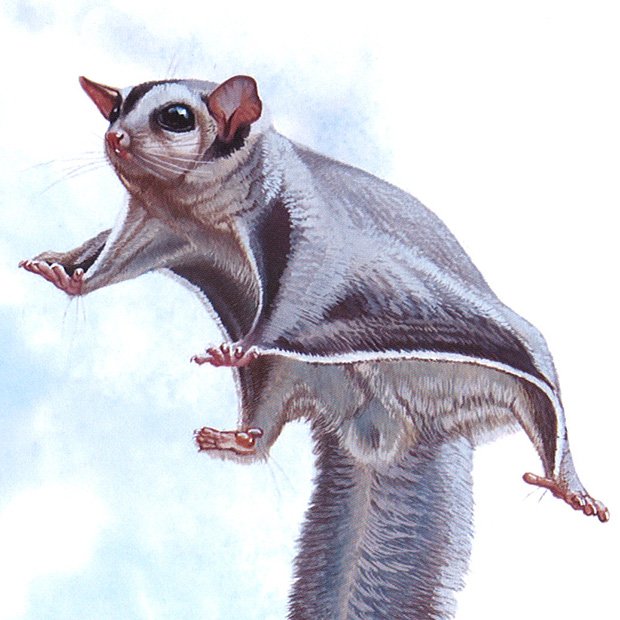
Mahogany glider (Petaurus gracilis)
North Queensland
This critically endangered glider has one of the smallest natural distributions of almost any mammal.
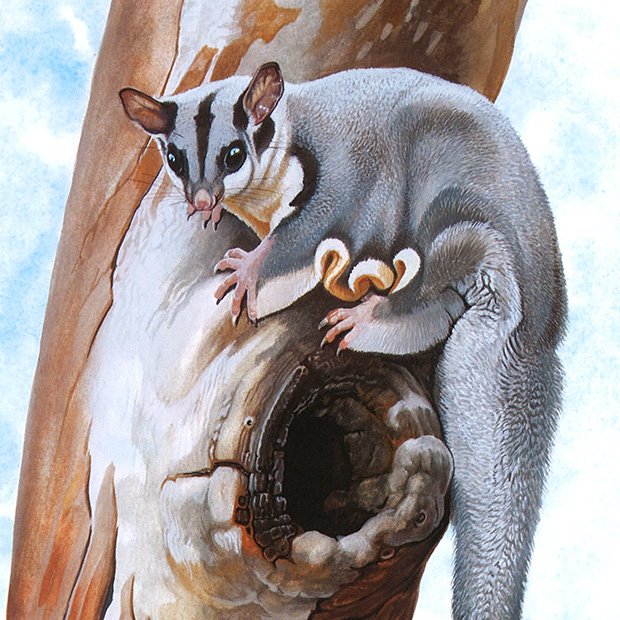
Squirrel glider (Petaurus norfolcensis)
Eastern Australia
Grunts help individuals to avoid each other’s territory.
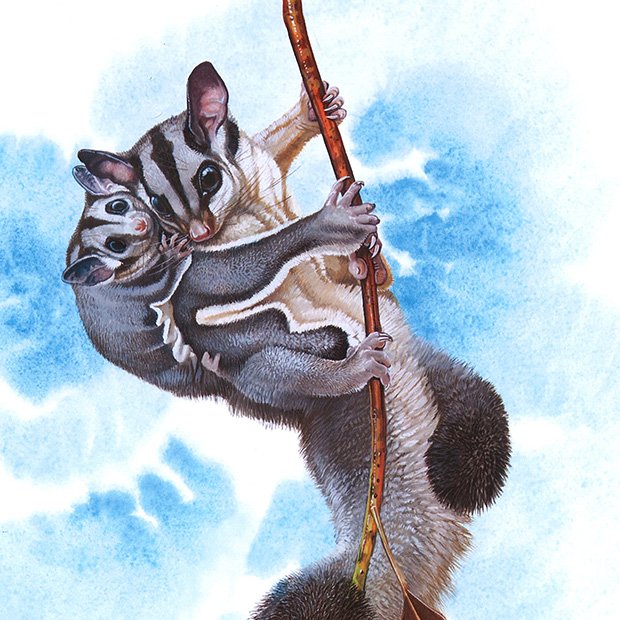
Spotted Giant Flying Squirrel (Petaurista elegans)
Several locations from Nepal to Borneo
The widely distributed spotted giant flying squirrel lives in range of habitats, from rocky cliffs in the Himalayas to oak-rhododendron forests in Nepal.
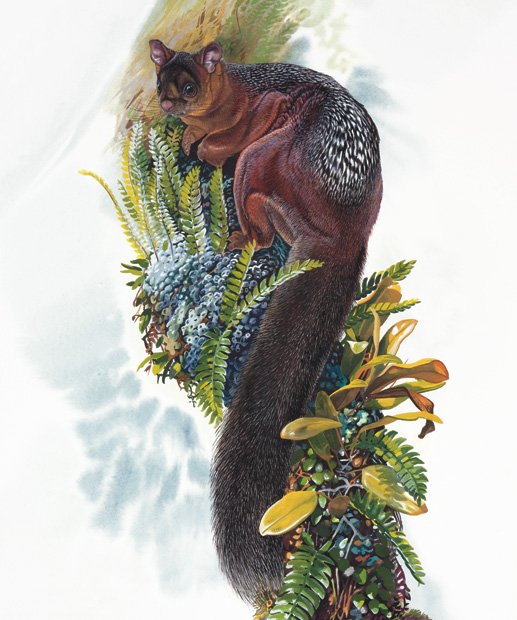
North Chinese Flying Squirrel (Aeretes melanopterus)
Central China
Little is known about the north Chinese flying squirrel that lives in two isolated pockets in china. It is one of the smallest of the giant flying squirrels with a body length up to 36cm.
